|
ASPCA Animal Poison Control Center
(APCC) experts field tens of thousands of calls each year involving animal companions who’ve had potentially hazardous
contact with insecticides, weed killers and pet-toxic plants.
"Keeping animals safe from accidental poisonings
should not end once you've stepped outside," says Dana Farbman, APCC pet poison prevention expert. "Protecting your pet from
potential hazards in your yard is just as critical."
While gardens and yards are lovely for relaxing, they can also prove
dangerous for our animal companions.
Our experts recommend you watch out for the following:
Poisonous
Plants
When designing and planting your green space, it's a good idea to keep in mind that many popular outdoor
plants—including sago palm, rhododendron and azalea—are toxic to cats and dogs. Sago palm and other members of
the Cycad family as well as mushrooms can cause liver failure, while rhododendron, azalea, lily of the valley, oleander, rosebay,
foxglove and kalanchoe all affect the heart. Please visit our full list—and pics!—of toxic and non-toxic plants
for your garden.
Fertilizer
Just like you, plants need food. But pet parents, take
care—the fertilizer that keeps our plants healthy and green can wreak havoc on the digestive tracts of our furry friends.
Ingesting large amounts of fertilizer can give your pet a good case of stomach upset and may result in life-threatening gastrointestinal
obstruction. Be sure to follow instructions carefully and observe the appropriate waiting period before letting your pet run
wild outside.
Cocoa Mulch
Many gardeners use cocoa bean shells—a by-product of
chocolate production—in landscaping. Popular for its attractive odor and color, cocoa mulch also attracts dogs with
its sweet smell, and like chocolate, it can pose problems for our canine companions. Depending on the amount involved, ingestion
of cocoa mulch can cause a range of clinical signs, from vomiting, diarrhea and muscle tremors to elevated heart rate, hyperactivity
and even seizures. Consider using a less-toxic alternative, such as shredded pine, cedar or hemlock bark, but always supervise
curious canines in yards where mulch is spread.
Insecticides
Like fertilizer, herbicides,
insecticide baits, sprays and granules are often necessary to keep our gardens healthy, but their ingredients aren't meant
for four-legged consumption. The most dangerous forms of pesticides include snail bait with metaldehyde, fly bait with methomyl,
systemic insecticides with the ingredients disyston or disulfoton, mole or gopher bait with zinc phosphide and most forms
of rat poisons. Always store pesticides in inaccessible areas—and read the manufacturer's label carefully for proper
usage and storage.
Compost
You're doing the right thing for your garden and Mother
Earth—you're composting! Food and garden waste make excellent additions to garden soil, but depending on what you're
tossing in the compost bin, they can also pose problems for our pets. Coffee, moldy food and certain types of fruit and vegetables
are toxic to dogs and cats, so read up on people foods to avoid feeding your pet.
Fleas and Ticks
Since fleas and ticks lurk in tall brush and grasses, it's important to keep those lawns mowed and trim. Fleas
can cause excessive scratching, hair loss, scabs, hot spots and tapeworms as well as anemia from blood loss in both cats and
dogs. Ticks can cause similar effects and lead to a variety of complications from tick-borne diseases such as Lyme disease,
Rocky Mountain spotted fever and Babesia.
Garden Tools
Unattended garden tools may
seem like no big deal, but rakes, tillers, hoes and trowels can be hazardous to pets and cause trauma to paws, noses or other
parts of a curious pet's body. Rusty, sharp tools caked in dirt may also pose a risk for tetanus if they puncture skin. While
cats don't appear to be as susceptible as dogs to tetanus, care should be taken by storing all unused tools in a safe area,
not haphazardly strewn on the ground.
Allergy-Causing Flora
Ah-choo! Like their sneezy
human counterparts, pets have allergies to foods, dust and even plants. Allergic reactions in dogs and cats can even cause
life-threatening anaphylactic shock if the reaction is severe. If you do suspect your pet has an allergy, please don't give
him any medication that isn't prescribed by a veterinarian. It's also smart to keep your pet out of other people's yards,
especially if you're unsure of what kinds of plants or flowers lurk there. Keeping your pet off the lawn of others will make
for healthy pets and happy neighbors.
How to Treat Plant Poisoning in Pets
The
toxic effects from plants depend on the amount, type and part of the plant eaten. If you suspect poisoning or catch your pet
chowing down on the azaleas, here's what you need to do.
Steps:
1. Remain calm and gather information
as quickly as possible. Time is paramount, but adequate information helps authorities determine what steps to take.
2. Attempt to determine the amount of the plant eaten, the name of plant and the time since ingestion
3. Prepare to tell your veterinarian or poison experts your pet's breed, age, sex, weight, number
of animals involved and abnormal signs your pet is exhibiting.
4. Call your veterinarian and
take your pet to the veterinary hospital immediately, or call the National Animal Poison Control Center at (888) 4ANI-HELP
or (888) 426-4435.
5. Know that you must pay a fee when calling the Poison Control Center.
6. Consult your veterinarian before inducing vomiting and be sure to get exact amounts of emetic to
use.
Tips:
Household plants that are toxic to pets include azalea, bird
of paradise, bulbs, dieffenbachia, hydrangea, jasmine, larkspur/delphinium, laurel, some mushrooms, philodendron, poinsettia,
prunus species, tobacco and yews.
Save identification sticks when plants are purchased to know a plant's
exact scientific name.
NEVER induce vomiting without consulting a veterinarian.
Prevention is the
best medicine
My advice is that you research on the Internet or in a book about which plants are
poisonous to animals. Then, make certain that you either do not keep these plants around the house or that they are out of
the animal's reach. Remember, prevention is the best form of medicine.
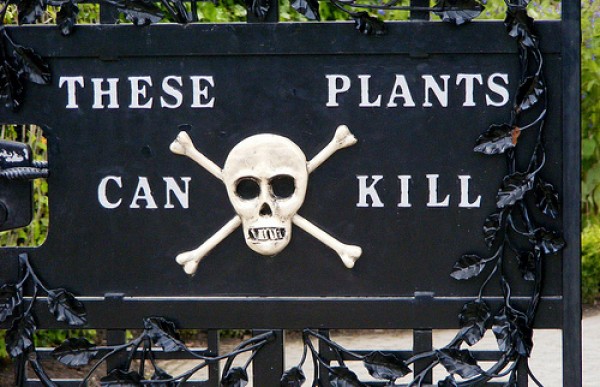
Some plants are known to be poisonous to
our pets. Please be aware of the existing landscaping as well as any new plants you wish to bring into your landscaping. For
a complete list of known poisonous plants please visit the ASPCA website.
17 Poisioneus Plants:
Gathered by ASPCA
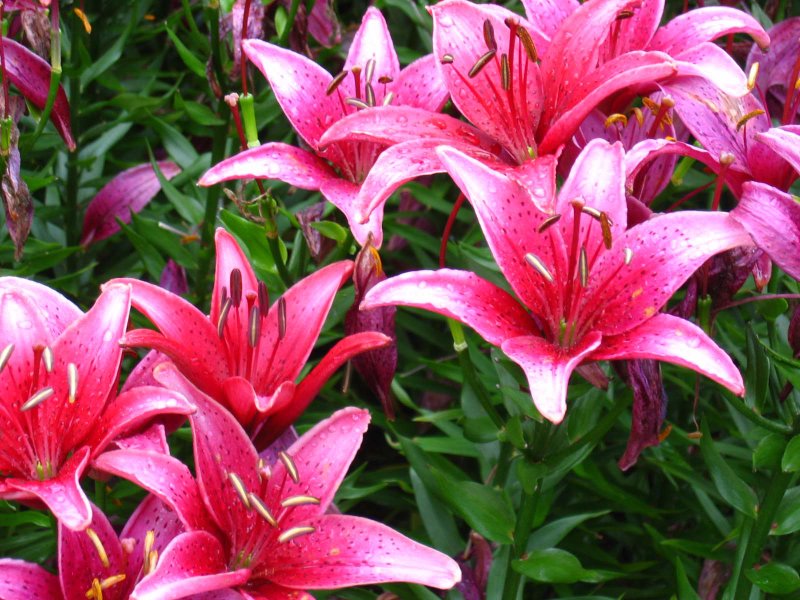
Lilies
Members of the Lilium spp. are considered to
be highly toxic to cats. While the poisonous component has not yet been identified, it is clear that with even ingestions
of very small amounts of the plant, severe kidney damage could result.

Marijuana
Ingestion of Cannabis sativa by companion
animals can result in depression of the central nervous system and incoordination, as well as vomiting, diarrhea, drooling,
increased heart rate, and even seizures and coma.
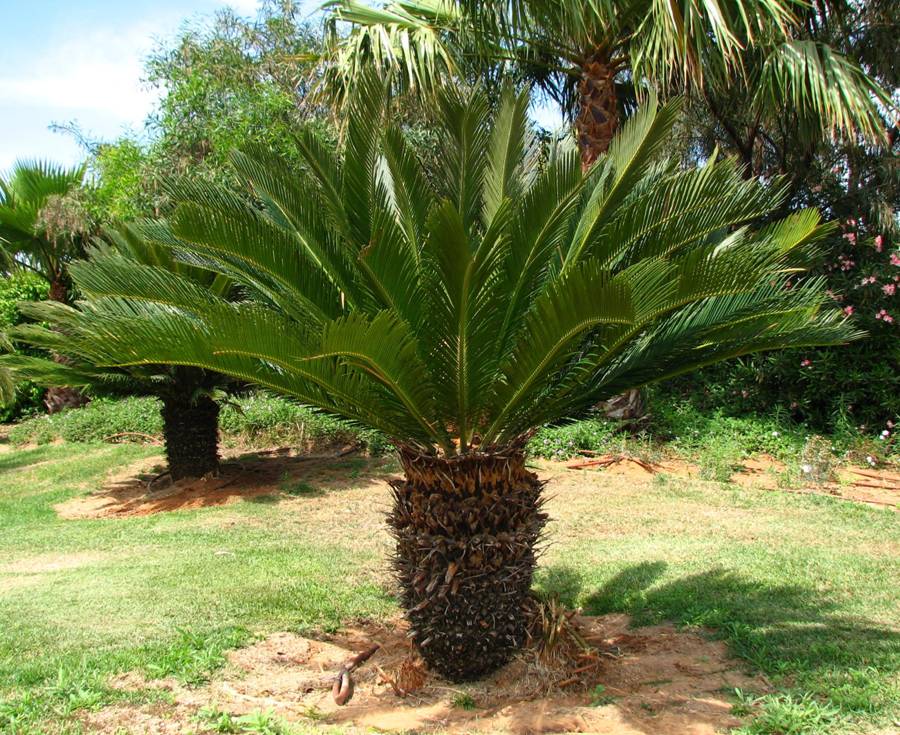
Sago Palm
All parts of Cycas Revoluta are poisonous,
but the seeds or “nuts” contain the largest amount of toxin. The ingestion of just one or two seeds can result
in very serious effects, which include vomiting, diarrhea, depression, seizures and liver failure.

Tulip/Narcissus bulbs
The bulb portions of Tulipa/Narcissus
spp. contain toxins that can cause intense gastrointestinal irritation, drooling, loss of appetite, depression of the central
nervous system, convulsions and cardiac abnormalities.
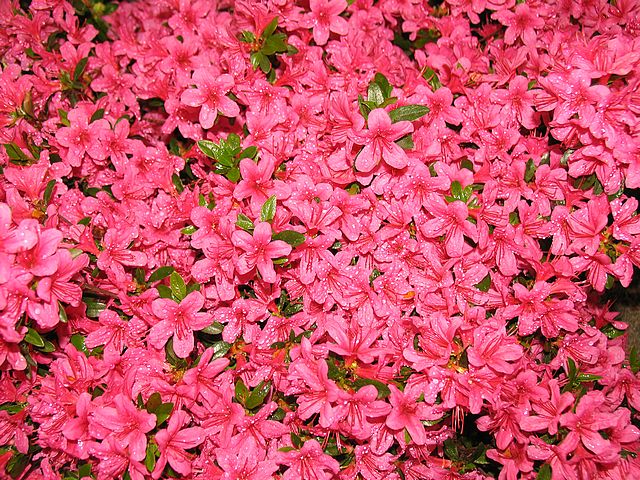
Azalea/Rhododendron
Members of the Rhododenron spp.
contain substances known as grayantoxins, which can produce vomiting, drooling, diarrhea, weakness and depression of the central
nervous system in animals. Severe azalea poisoning could ultimately lead to coma and death from cardiovascular collapse.
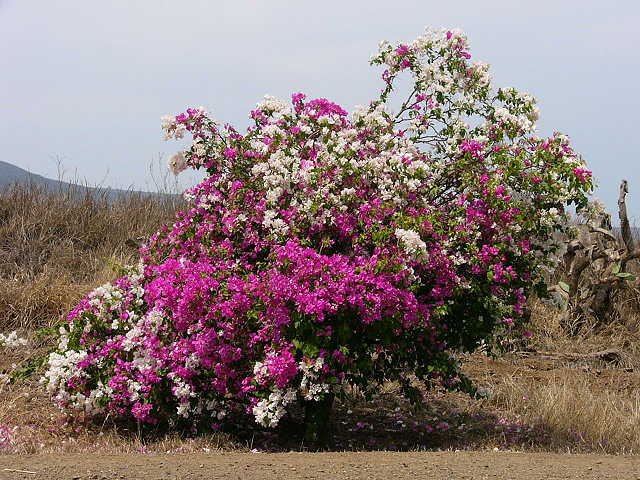
Oleander
All parts of Nerium oleander are considered
to be toxic, as they contain cardiac glycosides that have the potential to cause serious effects—including gastrointestinal
tract irritation, abnormal heart function, hypothermia and even death.
|
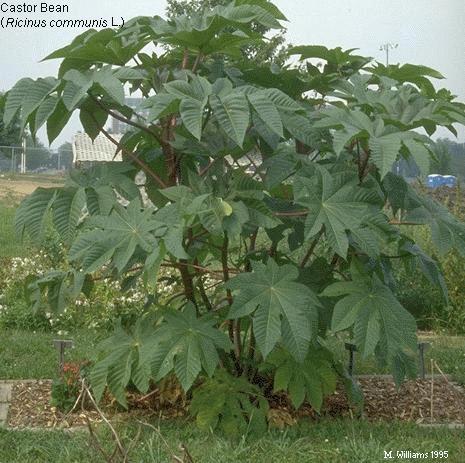
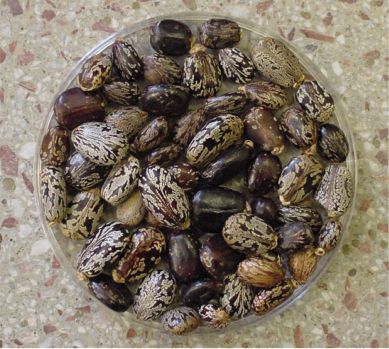
|
Castor Bean
The poisonous principle in Ricinus communis
is ricin, a highly toxic protein that can produce severe abdominal pain, drooling, vomiting, diarrhea, excessive thirst, weakness
and loss of appetite. Severe cases of poisoning can result in dehydration, muscle twitching, tremors, seizures, coma and death.
|
| |
|

Cyclamen
Cylamen species contain cyclamine, but the
highest concentration of this toxic component is typically located in the root portion of the plant. If consumed, Cylamen
can produce significant gastrointestinal irritation, including intense vomiting. Fatalities have also been reported in some
cases.
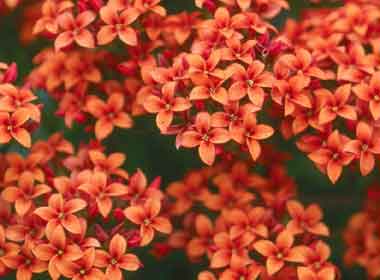
Kalanchoe
This plant contains components that can produce
gastrointestinal irritation, as well as those that are toxic to the heart, and can seriously affect cardiac rhythm and rate.
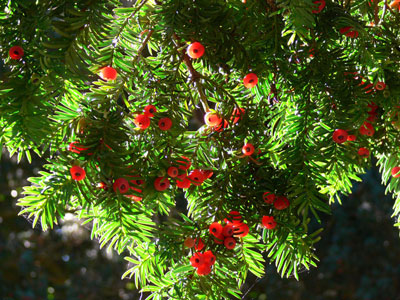
Yew
Taxus spp. contains a toxic component known as
taxine, which causes central nervous system effects such as trembling, incoordination, and difficulty breathing. It can also
cause significant gastrointestinal irritation and cardiac failure, which can result in death.
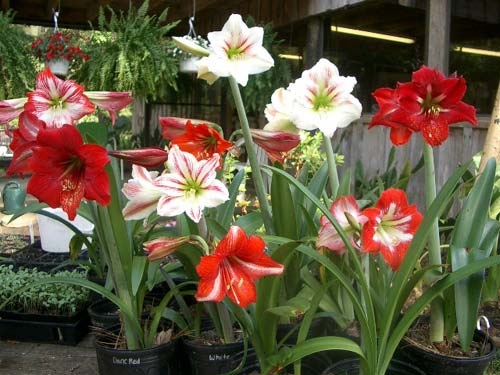
Amaryllis
Common garden plants popular around Easter,
Amaryllis species contain toxins that can cause vomiting, depression, diarrhea, abdominal pain, hypersalivation, anorexia
and tremors.
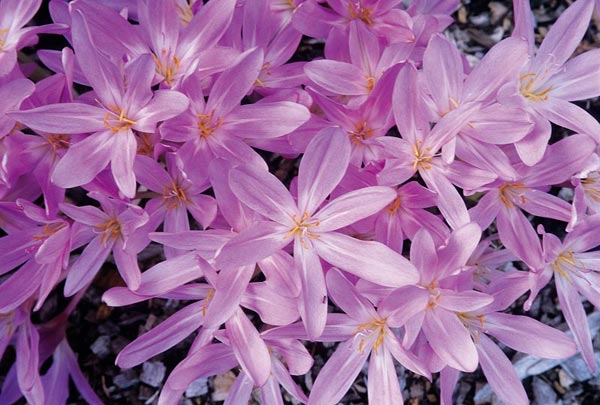
Autumn Crocus
Ingestion of Colchicum autumnale by pets
can result in oral irritation, bloody vomiting, diarrhea, shock, multi-organ damage and bone marrow suppression.
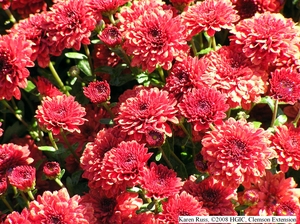
Chrysanthemum
These popular blooms are part of the
Compositae family, which contain pyrethrins that may produce gastrointestinal upset, including drooling, vomiting and diarrhea,
if eaten. In certain cases depression and loss of coordination may also develop if enough of any part of the plant is consumed.

English Ivy
Also called branching ivy, glacier ivy,
needlepoint ivy, sweetheart ivy and California ivy, Hedera helix contains triterpenoid saponins that, should pets ingest,
can result in vomiting, abdominal pain, hypersalivation and diarrhea.
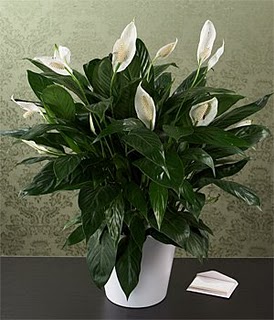
Peace Lily (AKA Mauna Loa Peace Lily)
Spathiphyllum
contains calcium oxalate crystals that can cause oral irritation, excessive drooling, vomiting, difficulty in swallowing and
intense burning and irritation of the mouth, lips and tongue in pets who ingest.
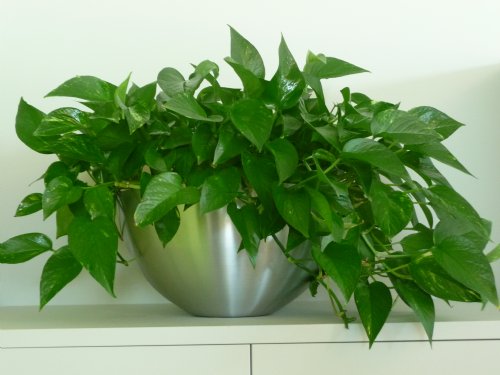
Pothos
Pothos (both Scindapsus and Epipremnum) belongs
to the Araceae family. If chewed or ingested, this popular household plant can cause significant mechanical irritation and
swelling of the oral tissues and other parts of the gastrointestinal tract.
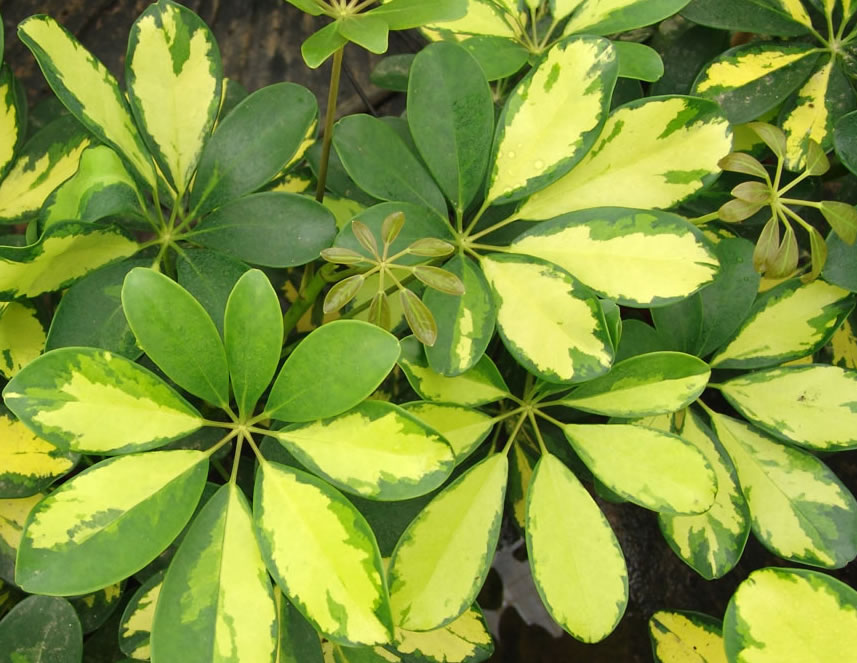
Schefflera
Schefflera and Brassaia actinophylla contain
calcium oxalate crystals that can cause oral irritation, excessive drooling, vomiting, difficulty in swallowing and intense
burning and irritation of the mouth, lips and tongue in pets who ingest.
|

